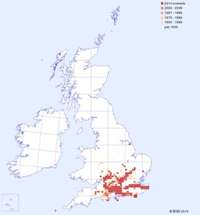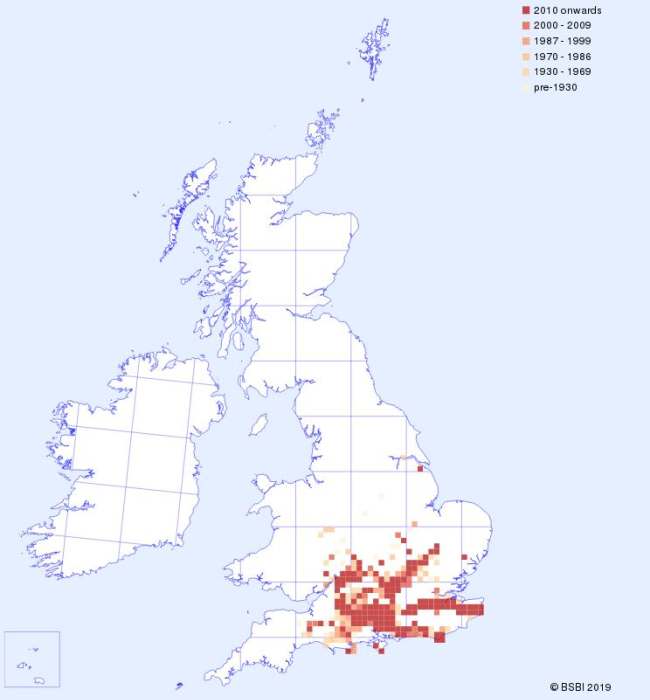Subject to the same habitat destruction and loss as Sword-leaved Helleborine Cepahlanthera longifolia and Red Helleborine Cephalanthera rubra, the White Helleborine has also declined steeply and has even become extinct in parts of its historical range. The clearing of ancient woodland in order to grow fast-growing cash-crop conifers for profit has done immeasurable damage to our nature. Broadly similar to the Sword-leaved Helleborine, there are two distinguishing features which help with identification: Cephalanthera damasonium is rather more tolerant of dark habitats created by dense tree canopies, and the leaves of Sword-leaved Helleborine are more numerous, narrower and more pointed. The flowers of Sword-leaved Helleborine are also much whiter than the slightly faded-looking creamy white flowers of White Helleborine. To add to the confusion of accurate identification, White Helleborine and Sword-leaved Helleborine often bloom together. A hybrid between these two species has also been recorded. In Britain White Helleborine is classed as Vulnerable; it is confined to the southern part of England, where it flowers from mid-May to late June. On the other side of the Channel, Cephalanthera damasonium is recorded in Scandinavia and the Baltic States in the north and southwards to the Mediterranean Region.
| Distribution Map | Key Features | |
 |
Records for White Helleborine from BSBI are shown on the map with most recent in front. (Hover the mouse over the small map to expand it.) |
Plant: 8 to 60cm in height but many to only 18cm. Stem green and ridged in the upper part, and it can be slightly hairy. There are 1 to 3 membranous sheaths at the stem base. |
Image Gallery for White Helleborine Cephalanthera damasonium
| Pollination | Taxonomy & Hybrids |
The flowers are sometimes pollinated by small bees, possibly attraced to the pseudopollen, but are thought to mainly self-pollinate. |
The specific name damasonium comes from Ancient Greek and means 'I take away/diminish' - perhaps a reference to an assumed medicinal value of this plant. |
Articles about White Helleborine in JHOS
